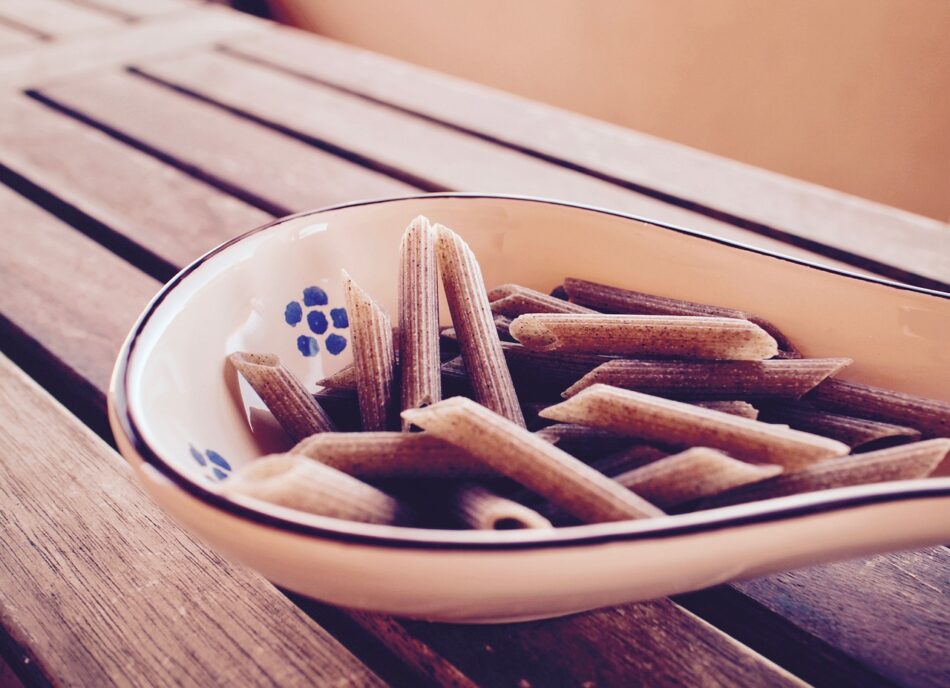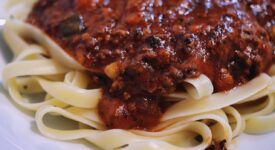Pasta is a common food enjoyed by many, but for those with gluten sensitivities or celiac disease, it can be a challenge to find a pasta that is safe to eat. Gluten is a protein found in wheat, barley, and rye that can cause an immune response for those with gluten sensitivities or celiac disease. Therefore, it is important to know if the pasta is gluten-free or not before consuming it.
There are many gluten-free pasta options available, such as those made from rice or corn flour. However, it is important to check the label for information on how the pasta was processed and cooked, as cross-contamination during production or cooking can occur. This can lead to gluten contamination that can cause a reaction in those with gluten sensitivities or celiac disease.
If you are looking for gluten-free pasta options, popular varieties include brown rice pasta, quinoa pasta, and chickpea pasta. These gluten-free options can be found in health food stores or online.
In conclusion, while traditional pasta contains gluten, there are many gluten-free pasta options available. It is important to check labels carefully and be aware of cross-contamination concerns to ensure a safe and satisfying gluten-free meal.
What is Gluten?
Gluten is a protein found in wheat, barley, and rye, that can cause an immune response in some people. For those with celiac disease, consuming gluten can damage the lining of the small intestine and lead to malabsorption of nutrients. For individuals with gluten sensitivities, consuming gluten can cause symptoms such as bloating, abdominal pain, and diarrhea.
Gluten is found in many foods, including bread, pasta, cereal, and beer. It is also used as a binder in some processed foods, such as sauces and dressings. It’s important for people with celiac disease or gluten sensitivities to read food labels carefully and avoid foods that contain gluten.
In recent years, there has been an increase in gluten-free food options, making it easier for those with gluten sensitivities or celiac disease to enjoy a variety of foods without experiencing symptoms. However, it’s important to note that not all gluten-free options are created equal and cross-contamination during production or cooking can still be a concern.
Is All Pasta Gluten Free?
When determining whether or not pasta is gluten free, it’s important to keep in mind that not all pasta is free of gluten. Traditional pasta is typically made from wheat flour, which contains gluten and can cause reactions in those with celiac disease or gluten sensitivities.
However, there are gluten-free pasta options available now, such as those made from rice or corn flour. These options can typically be found in health food stores or online. It’s important to check labels and ensure that the pasta is indeed gluten free.
One concern to keep in mind is the possibility of cross-contamination. Even if pasta is made with gluten-free ingredients, it can still be contaminated with gluten during production or cooking. It’s important to read labels carefully and check for information about how the pasta was processed and cooked.
Gluten Free Pasta Varieties
Gluten-free pasta is a great option for those who are sensitive to gluten or have celiac disease. There are many varieties of gluten-free pasta available, including brown rice pasta, quinoa pasta, and chickpea pasta. These options can be found in health food stores or purchased online. Brown rice pasta is made from brown rice flour and has a similar texture to traditional pasta. Quinoa pasta is made from quinoa flour and has a slightly nutty taste. Chickpea pasta is made from chickpea flour and has a heartier texture than traditional pasta. It’s important to read labels and check for cross-contamination concerns when purchasing gluten-free pasta. It’s also a good idea to cook the pasta in a separate pot to avoid any cross-contamination from gluten-containing foods. With a variety of options available, those with gluten sensitivities or celiac disease can still enjoy pasta as part of their diet.
Cross-Contamination Concerns
When considering if a pasta is gluten free, it’s important to be aware of cross-contamination concerns. Even if a pasta is made with gluten-free ingredients, it can still come into contact with gluten in the production or cooking process.
One way to avoid cross-contamination is to look for pasta that is certified gluten free. This means that the pasta has gone through a thorough testing process and has been found to contain less than 20 parts per million (ppm) of gluten.
It’s also important to check the label for information on how the pasta was processed and cooked. Some manufacturers may use equipment that has also been used for wheat-based products, which increases the risk of cross-contamination.
For those with severe gluten sensitivities or celiac disease, it may be best to avoid pasta altogether and opt for alternative gluten-free grains such as quinoa or rice. These grains can be used to make pasta and provide a safe and delicious alternative.
Conclusion
In conclusion, there are plenty of gluten-free pasta options available for those who have gluten sensitivities or celiac disease. However, it is important to do your research and check labels carefully. Pasta that is made with gluten-free ingredients can still be contaminated with gluten, so it’s important to be aware of cross-contamination concerns during both production and cooking. With a little bit of caution and attention to detail, it’s possible to enjoy a truly gluten-free meal that includes pasta. So next time you’re in the mood for pasta, don’t hesitate to explore the wide range of gluten-free options available to you!








